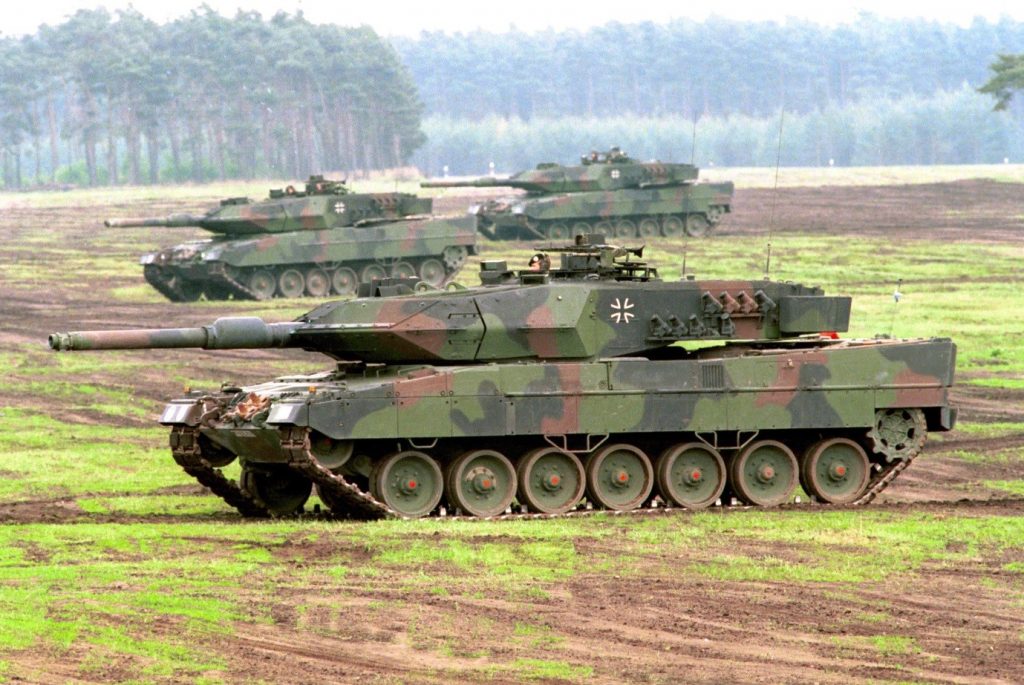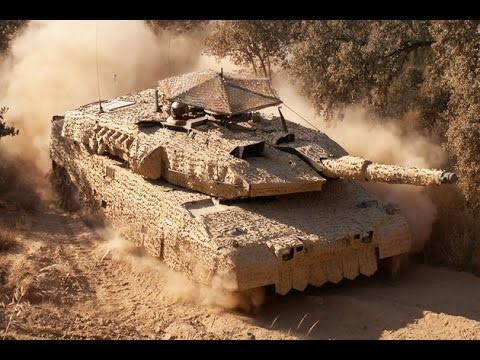The SCS or Spotting and Camouflage System happens to be one of the most complex systems of Armored Warfare. To prevent any kind of cheating, all the equations and checks are calculated by our servers, instead of your computer. If you are wondering how it works, then you should give this article a read.
Basic Principles
The SCS is operated by the Spotting Manager. The main purpose of this management system is to make sure that all vehicles including Inkas Armored are participating in the spotting system. This is done by assigning them to a Spotting Proxy which is the representation of each vehicle’s spotting mechanism on the server-side.
Even today, armies make use of management systems on the battlefield that helps them to keep track of every vehicle and unit present on the battlefield. This is needed to improve assess tactical situations, situational awareness, and also avoid friendly fire incidents.

However, enemy vehicles are different. To find out whether it is an enemy vehicle or not, you need to rely on spotting checks.
All the vehicles in the game including the Inkas Armored have two “spotter” points that help them to look for the enemies. One is the gun sights and the second is commander hatch.
The vehicles in the game come with eleven “spot check” points. This include:
- Tip of the gun barrel
- Four corners of the hull
- Four corners of the turret
- Two spots in the middle of the hull sides
SCS takes spotter points for your vehicle and traces a ray towards the enemy spot checkpoints. In case, the rays are blocked, the spot check will fail which means your Inkas Armored will not be spotted by the enemy. However, if a single ray establishes a connection between your spotter points and enemy spot checkpoints, then the enemy vehicle gets spotted.
You should be informed that these spot checks are temporary. These checks happen using a certain frequency that tends to reduce with distance.
However, the distance traveled by the rays is not infinite. The maximum value it can have is decreased by multiple factors including:
- Vehicle View Range
- Vehicle Configuration
- Enemy vehicle camouflage
- Environmental camouflage
- Action
- Game Mode
Now let’s discuss each of these factors to give you a better understanding:
- Vehicle View Range
This is a number that is used to represent the vehicle’s optics quality which increases with tiers. It can range from advanced thermal imager optics to simple gun sights.
View Range can be described as a balancing parameter based on a class. Armored Fighting Vehicles like Inkas Armored and light tanks have the highest view range, whereas tank Destroyers have a good view range. On the other hand, Main Battle Tanks have a low view range, while Armored Warfare has the lowest.
- Vehicle Configuration
You can change the spotting efficiency and view the range of your vehicle by configuring it.
- Recon Package module helps increase the view range of your vehicle when it is standing.
- Thermal Sights modules reduce the power of environmental camouflage
- Some Commander Skills can help increase the vehicle view range
- Improved Electronic Lenses Retrofit can also improve the view range when the vehicle is standing
- Augmented Optics Retrofit can increase the view range under all circumstances
The view range value of a configured LT or AFV is always better than an MBT.
- Enemy Vehicle Camouflage
Vehicle Camouflage is opposite to the view range. It is a modifier that helps reduce the view range of your enemy’s vehicle to some extent. This is determined by the camouflage factor of the vehicle. The camouflage factor is based on the percentage format.
The camouflage factor is dependent on vehicle class, size, and tier. This means smaller vehicles have better camouflage factor in comparison to larger ones. However, you can modify the camouflage factor by:
- Commander skills
- Visual Camouflage
- Modules
- Retrofits
- AFV Active Ability
- Environmental Camouflage
In Armored Warfare, hiding behind a bush can be highly beneficial for you as it can improve the camouflage by 30%. The rays between your spot checkpoints and enemy spotter points have to pass through the bush objects. This is known as Environmental Camouflage Bonus.
Several environmental camouflage bonuses can stack up to the bonus value of 0.45. When you stand under a tree with a large crown, it will not help your camouflage. However, when you stand on the same level as the tree canopy, it will give you a perfect camouflage. Just so you know fallen trees can also be used as improvised bushes.
- Action
In Armored Warfare, both firing and moving can influence your camouflage factor.
For instance, firing a gun reduces the environmental camouflage and your base camouflage. This makes you easy to spot.
Moving too can reduce your camouflage. However, this penalty is not binary. When your vehicle moves fast, it reaches its maximum value for that given speed. But moving slow can decrease the maximum penalty. Once the vehicle stops, the penalty goes back to 0 value. Just so you know Armored Fighting Vehicles don’t lose camouflage when moving slowly and Light Tanks don’t lose camouflage when moving. Vehicles on fire can get a huge penalty to camouflage.

- PVE Spotting
Spotting in Global Operations and PvP works the same way as it is described above. But it has many peculiarities. The first thing you should know that AI does not “cheat”.
Due to the smaller PvP maps size, the spotting range is decreased for all vehicles on the map, whereas the view range is reduced by 55%.
This penalty is applied to the final check. You should also know that 0.21 comes with more AI penalties:
- Easy Difficulty
- Medium Difficulty
- Hard Difficulty
By now you should know how the SCS works in Armored Warfare. This is one of the most important aspects of the game and therefore, you have all the reasons to pay attention to it in the game.
